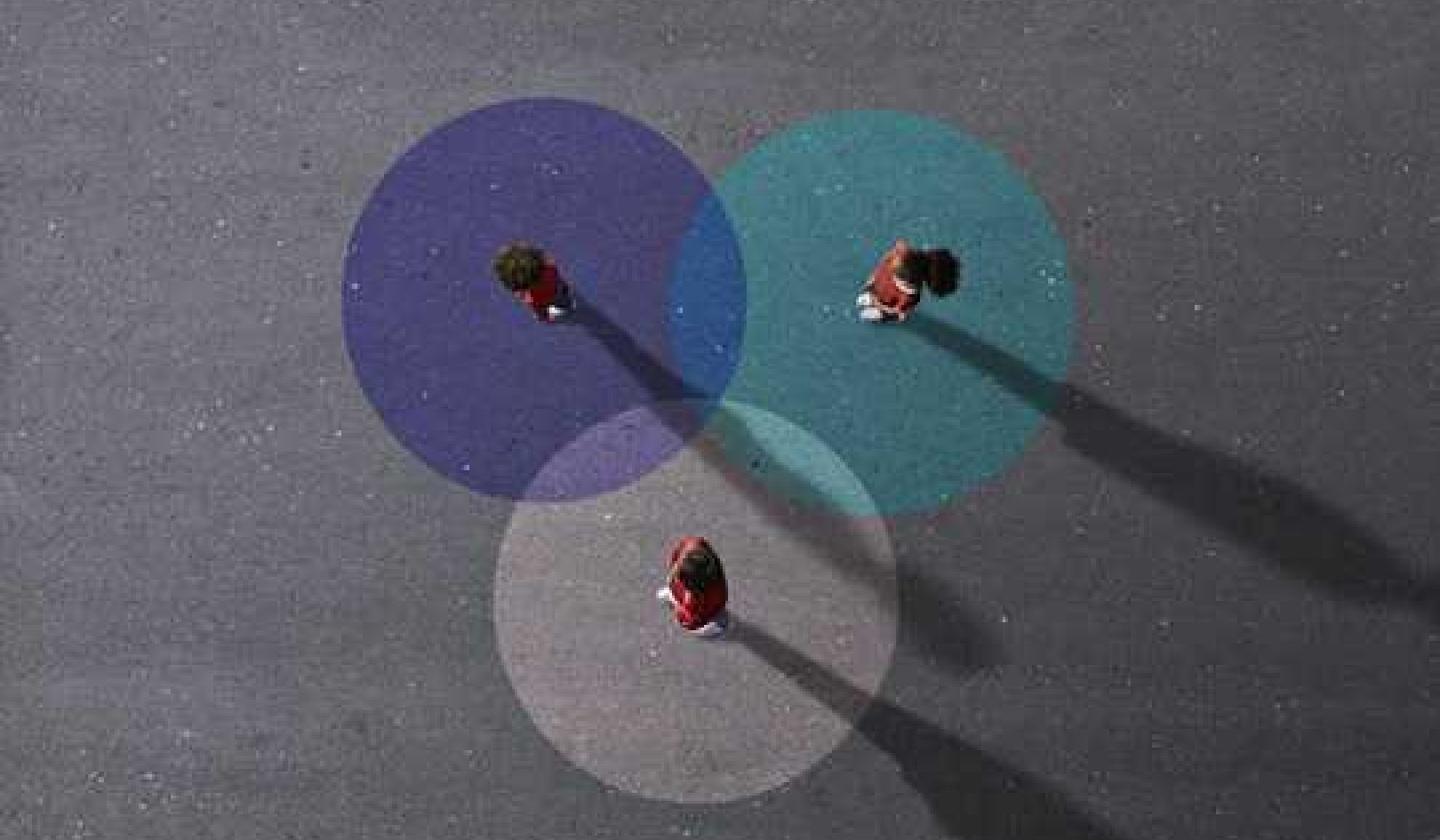
Image by マサコ アーント from Pixabay
Article Summary: This article explores how our electromagnetic fields influence personal space, charisma, and group dynamics, drawing analogies to light bulbs, magnets, and tuning forks. Through scientific insights and real-world examples, we understand how these interactions impact our lives and relationships. Practical applications in workplace settings and group activities are discussed, highlighting the importance of energy hygiene and collective consciousness.

Are Humans Magnets or Tuning Forks?
by Eric Leskowitz, M.D.
Did you know, looking at Brad Pitt is a bit like looking at the sun?
Some movie stars have this natural wattage.
~ Actor Rafe Spall, 2021
For better or worse, I’ve never met Brad Pitt. The closest I ever came to a celebrity was when I had a selfie taken with Fergie, Lady Sarah Ferguson, at an integrative medicine reception where she was a sponsor. She was charismatic, but she didn’t cause my camera’s film to overexpose (this was in the pre-digital era).
Even so, the above quote is not just a figure of speech—interesting things happen when two or more biofields interact with each other. You don’t end at your skin, and as an individual human being you are permeated by a field of invisible energy, whether it’s electromagnetic, metaphysical, or quantum physical in nature. And interact these biofields do, in very similar ways to the bar magnets you played with as a kid—the ends repel each other if they’re both north but attract each other if they’re north to south. The bigger the magnet, the further apart they can be placed while still exerting a tangible force.
As with magnets, so with people.
Personal Space
The information about how close we are to each other is transmitted by a magnetic sense that we all have—the ability to perceive our personal space, our aura, our biofield. The entire body is able to pick up these “magnetical” cues of biofield boundaries.
How else do we know when someone unseen is approaching us from behind? How did our mothers develop those proverbial “eyes in the back of my head?”
What Does Science Say?
It’s not controversial that an electromagnetic field surrounds the body, and the magnetic component of it can be easily measured with a magnetometer, aka a gaussmeter. The edge of the human magnetic field extends five or more feet out into space, with the exact distance depending on the sensitivity of the measuring device and the strength of any given person’s biofield.
Many non-human animals are known to have magnetic sensors—migrating birds that orient to the earth’s magnetic field, fish whose lateral lines detect nearby EMFs, and humans with magneto-detecting iron oxide crystals in their pineal glands. And the polarity of magnets—North vs. South—has its analog in personal interactions, as people are repelled or attracted in much the same way.
Charisma: An Energetic Aura
At its core, charisma is an energetic phenomenon. My yoga teacher had it because he had spent a lifetime building up his reservoir of prana, to the point where it was palpable to others.
In a similar way, celebrities like Fergie and Brad have a field, an aura, about them. Famous dancer Rudolf Nureyev had this effect on one of his ballet partners (Crompton, 2023): “I swear he had an energetic aura around him. It was a force of nature.” And while some of that power comes from their own confidence and genius when in the Zone, a big(ger) part is literally projected onto them by their fans, inflating their biofield balloons.
To a clairvoyant, the energy infusion from fan to popstar is as visible as if they were being sprayed with a water hose. Like any power, this energy of charisma can also be abused, as in cults.
Humans as Tuning Forks
Just as a tuning fork will start to vibrate in resonance with a neighboring fork of the same frequency that has been struck, so will people. That’s why, and how, emotions are contagious—we literally vibrate in energetic resonance with other people. This is how we pick up the “vibe” when we enter a room, how we’re drawn to certain people that we “resonate” with, and how group energies build and grow.
The tuning fork effect happens every day, in every interaction we have with one another. We’re each tuning forks, capable of vibrating at many different frequencies, and needing only a reminder “note” to get back in tune to our truest vibrational state.
And if resonance with one person can be that powerful, then imagine how much more impactful a group’s influence can be.
Small Group Resonance and Workplace Teams
Burnout is an increasingly common problem among America workers, which was made worse by the disconnecting pressures of Covid—lockdowns, masks, Zoom, isolation—on top of the disempowering experience of working in corporate settings. One crucial defense against workplace stress has always been the support of your work crew, your team, because when employees feel respected, valued and appreciated, they are better able to ride out storms.
When all members of a group—a family, workplace, sports team, or musical group—are aligned to their own personal energy sources, and when they support the others in doing the same, then people can blossom in the larger field of shared energetic abundance. Many new workplace practices in this vein are being implemented by HR departments nationwide, from a moment of mindfulness at the start of a meeting to shared joke-telling to break the ice.
A note of caution: when biofields interact, it’s possible to take on other people’s energies that are not in alignment with yours. The shared positive intent among team members is a big help in maintaining energetic clarity, but so-called energy hygiene practices provide important ways to release the “stuff” you take on empathically, and are key to self-care and burnout prevention (Leigh, 2021).
Here is a simple demonstration of the tangible physical impact of the energy generated by coherent group intention and attention.
Demonstration: The Secret Starer
I’ve always enjoyed tweaking skeptics and showing them something that stretches their envelope a bit. One such opportunity presented itself at the outpatient clinic where I used to work. At a team meeting that finished early, we had some free time, so I proposed a demo on the power of attention. It was a test that some of my “true believer” colleagues and I had successfully performed at an earlier meeting of our healer’s special interest group, so we knew it worked with people who were open to it, but what about skeptics?
We asked the team psychologist (our resident skeptic) if he was willing to be the guinea pig for a painless demonstration of group energy. He assented (he’d have looked like a coward if he said no!), so as the 8 of us sat around the meeting room table, we asked him to close his eyes and pay attention to the sensations in his chest. The others would send him positive energy at a silent signal from the group leader and would start and stop these messages at random time intervals.
We asked the psychologist to raise his hand when he felt “something,” and to lower it when that sensation went away. Much to his surprise (and ours too, to be honest), he raised and lowered his hand at almost exactly the same times that we began and ended our shifts of focus.
Measuring Large Group Energies
For over 40 years, the Princeton Engineering Anomalies Research (PEAR) lab studied the effect of human attention on random events. Their work sounds like something straight out of the William H. Macy movie The Cooler—he played a sad sack loser of a man whose bad luck was so pervasive that he could “cool off” any “hot streaks” at a casino’s gambling table just by standing nearby (no hints here about what happened to this skill when he fell in love with the casino’s cocktail waitress).
That movie was fiction of course, but Dr. Robert Jahn, Chairman of Princeton University’s Department of Engineering, found the grain of truth behind this superstition when he created a high-tech version of the roulette table. His team programmed a computer to generate a string of randomly ordered ones and zeroes (so it was more like flipping a coin) at the rate of several thousand times per second—the random number generator (RNG). His team studied how that randomness was affected by human attention, and found, amazingly, that people could skew the output of the computer away from its baseline of a 50/50 distribution of ones and zeroes simply by sitting nearby and willfully intending that the numbers shift. The impact became very significant from a statistical point of view when the trials were repeated hundreds and thousands of times.
Fan Energy at a Baseball Game
So what would happen if an RNG program was run during a large scale, highly emotional event like a pro baseball game? A test was set up to see if the output from a laptop computer version of the RNG program would shift away from the baseline 50/50 string of ones and zeroes at any time during a live baseball game, and to see what patterns and correspondences might emerge.
To do this, I set up my laptop in an undisturbed corner of the bleacher seats in Fenway Park at the start of a Red Sox game. I then moved to a different part of the stadium to watch the game (the RNG program’s developer was concerned that if I sat too close to the computer, my emotions would directly impact the computer’s output—weird but true), while making notes of events that I thought were particularly significant to the crowd—key hits, moments of anticipation and high anxiety, etc.
After the game ended, I retrieved the computer and sent the output file to the software engineer who had developed this particular RNG program (Scott Wilber of Psygenics Inc.). He then “decoded” the output and graphed out the ebbs and flows in the data in each successive 30-second time epoch.
As it turned out, of the eight game moments that I thought were most intense (such as a home run by our star player or the crowd starting the rhythmic group cheer called “the wave”), six mapped out exactly with maximal RNG output spikes. The odds of so many correspondences occurring due to pure coincidence were well over 10,000:1, an extreme long shot. In other words, something besides pure chance created this correlation. That something was fan energy, aka collective consciousness, aka the extended biofield of the 35,000 fans.
Copyright 2024. All Rights Reserved.
Adapted with permission of the publisher, Bear & Co,
an imprint of Inner Traditions Intl.
Article Conclusion: In understanding that humans are akin to magnets and tuning forks, we uncover the profound impact of our biofields and energy resonance on our daily lives. Recognizing these interactions can enhance our personal connections, improve workplace dynamics, and foster a greater sense of collective well-being. Embracing the science behind our biofield interactions opens up new possibilities for personal growth and harmonious group energies.
Article Source:
BOOK: The Mystery of Life Energy
The Mystery of Life Energy: Biofield Healing, Phantom Limbs, Group Energetics, and Gaia Consciousness
by Eric Leskowitz.
 Examining the wealth of evidence supporting the reality of the human biofield, Eric Leskowitz, M.D., explores the role of life energy in healing therapies and outlines its many manifestations at the individual, group, and global levels. He shows how energy therapies have been taboo in the West. He reveals irrefutable evidence for the clinical benefits of energy-based therapies and describes the obstacles he faced in his own attempts to bring these holistic approaches into the world of academic medicine.
Examining the wealth of evidence supporting the reality of the human biofield, Eric Leskowitz, M.D., explores the role of life energy in healing therapies and outlines its many manifestations at the individual, group, and global levels. He shows how energy therapies have been taboo in the West. He reveals irrefutable evidence for the clinical benefits of energy-based therapies and describes the obstacles he faced in his own attempts to bring these holistic approaches into the world of academic medicine.
For more info and/or to order this book, click here. Also available as a Kindle edition.
About the Author
 Eric Leskowitz, M.D., is a retired Harvard Medical School-affiliated psychiatrist who practiced pain management for more than 25 years at Spaulding Rehabilitation Hospital in Boston. He has published more than 50 articles in peer-reviewed scientific journals and is the author/editor of four books including The Mystery of Life Energy. His documentary about group energies and sports, The Joy of Sox, aired nationally on PBS in 2012.
Eric Leskowitz, M.D., is a retired Harvard Medical School-affiliated psychiatrist who practiced pain management for more than 25 years at Spaulding Rehabilitation Hospital in Boston. He has published more than 50 articles in peer-reviewed scientific journals and is the author/editor of four books including The Mystery of Life Energy. His documentary about group energies and sports, The Joy of Sox, aired nationally on PBS in 2012.
Author's website: https://themysteryoflifeenergy.com/





























